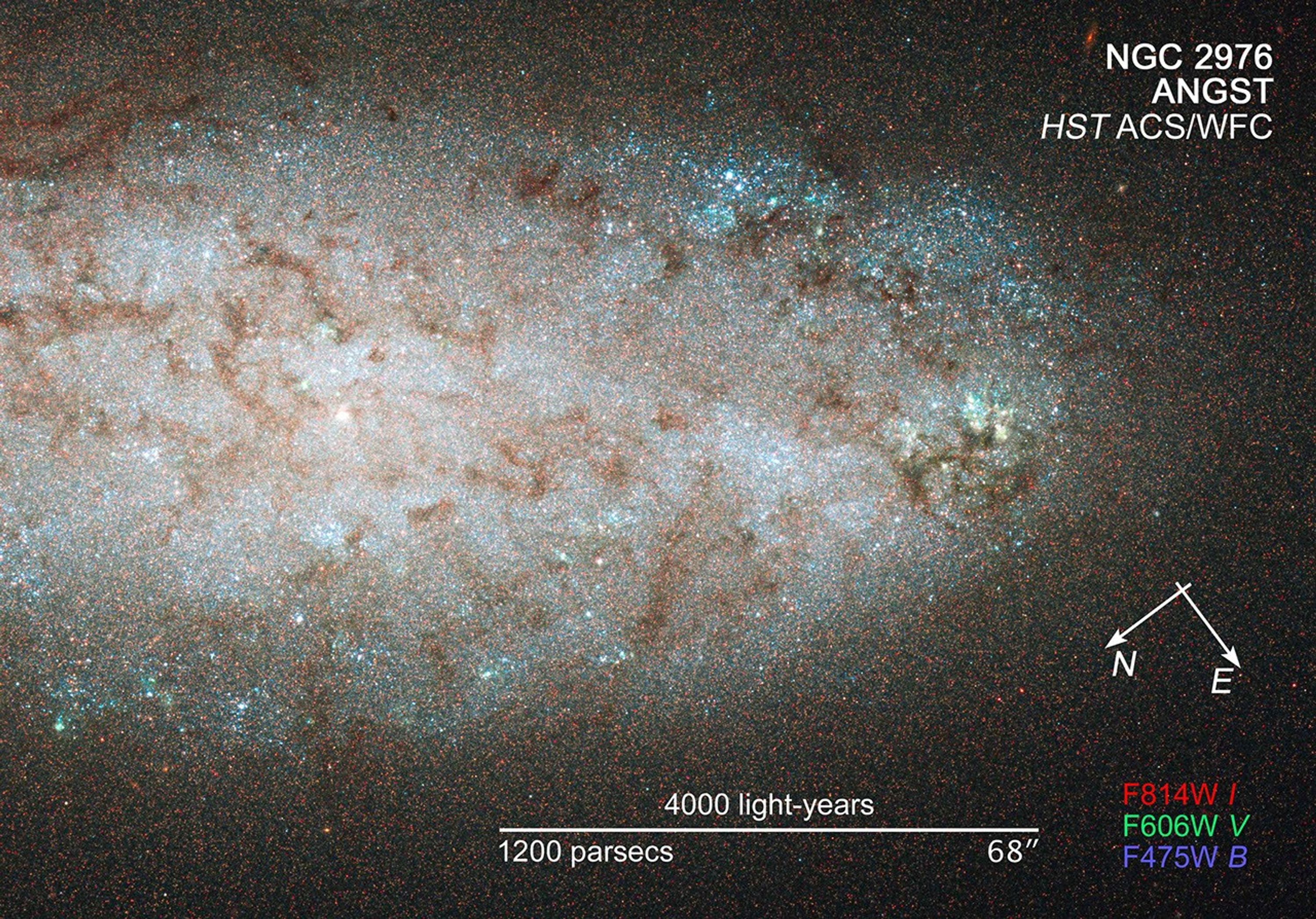1 min read
Compass and Scale Image for NGC 2976

About the Object
- R.A. PositionR.A. PositionRight ascension – analogous to longitude – is one component of an object's position.09h 47m 15.45s
- Dec. PositionDec. PositionDeclination – analogous to latitude – is one component of an object's position.67° 54' 59.0"
- ConstellationConstellationOne of 88 recognized regions of the celestial sphere in which the object appears.Ursa Major
- DistanceDistanceThe physical distance from Earth to the astronomical object. Distances within our solar system are usually measured in Astronomical Units (AU). Distances between stars are usually measured in light-years. Interstellar distances can also be measured in parsecs.This image is 2.8 arcminutes (9,800 light-years or 3,000 parsecs) wide.
About the Data
- Data DescriptionData DescriptionProposal: A description of the observations, their scientific justification, and the links to the data available in the science archive.
Science Team: The astronomers who planned the observations and analyzed the data. "PI" refers to the Principal Investigator.This image was created from HST data from proposal 10915: J. Dalcanton (University of Washington, Seattle) and collaborators. - InstrumentInstrumentThe science instrument used to produce the data.HST>ACS/WFC
- Exposure DatesExposure DatesThe date(s) that the telescope made its observations and the total exposure time.December 27, 2006 - January 10, 2007, Exposure Time: 1.3 hours
- FiltersFiltersThe camera filters that were used in the science observations.F475W (B), F606W (V), and F814W (I)
- Object NameObject NameA name or catalog number that astronomers use to identify an astronomical object.NGC 2976
- Object DescriptionObject DescriptionThe type of astronomical object.Spiral Galaxy
- Release DateJanuary 14, 2010
- Science ReleaseHubble Catches End of Star-Making Party in Nearby Dwarf Galaxy
- Credit

Color Info
Color InfoA brief description of the methods used to convert telescope data into the color image being presented.
The image is a composite of separate exposures made by the ACS/WFC instrument on the Hubble Space Telescope. Three filters were used to sample broad wavelength ranges in the near infrared. The color results from assigning different hues (colors) to each monochromatic image. In this case, the assigned colors are: Blue: F475W (B) Green: F606W (V) Red: F814W (I)

Compass and Scale
Compass and ScaleAn astronomical image with a scale that shows how large an object is on the sky, a compass that shows how the object is oriented on the sky, and the filters with which the image was made.
Related Images & Videos

Star-Birth Party Almost Over in NGC 2976
NGC 2976 does not look like a typical spiral galaxy, as this NASA Hubble Space Telescope image shows. In this view of the oddball galaxy's inner region, there are no obvious spiral arms. Dusty filaments running through the disk show no clear spiral structure. A raucous...
Share
Details
Last Updated
Aug 17, 2025
Contact
Media
Claire Andreoli
NASA’s Goddard Space Flight Center
Greenbelt, Maryland
claire.andreoli@nasa.gov




























